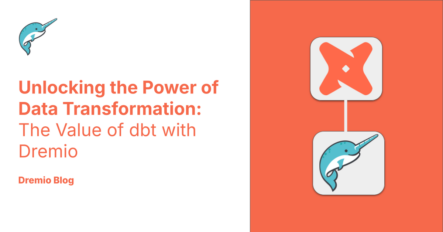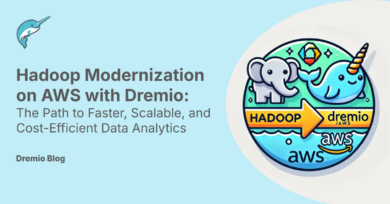6 minute read · October 17, 2024
Unlocking the Power of Data Transformation: The Value of dbt with Dremio
· Senior Tech Evangelist, Dremio

Join the Dremio/dbt community by joining the dbt slack community and joining the #db-dremio channel to meet other dremio-dbt users and seek support.
The ability to transform raw data into actionable insights is critical. As organizations scale, they need efficient ways to standardize, organize, and govern data transformations. This is where dbt (data build tool) shines.
What is dbt?
dbt is an open-source tool that allows data analysts and engineers to transform raw data into models using SQL. By leveraging software engineering best practices, such as version control, testing, and documentation, dbt enables teams to structure data transformations in a clear, repeatable, and scalable manner.
Key benefits of dbt include:
- Version Control: Treat your data models like code, allowing for collaborative development and history tracking.
- Testing and Validation: Ensure the accuracy and consistency of your data transformations with built-in testing functionality.
- Modular Design: Break down complex transformations into reusable components, improving maintainability and scalability.
- Documentation: Easily document models and dependencies, making it easier for teams to understand and trust their data.
The Value of Using dbt with Dremio
While dbt brings significant value on its own, integrating it with Dremio’s data lakehouse platform takes data transformation to the next level.
- Unified Data Access: Dremio provides a unified data layer that connects to various data sources, such as cloud storage, on-premises systems, and relational databases. By integrating dbt with Dremio, you can create transformation models that span across multiple data sources, all within a single platform.
- Accelerated Query Performance: Dremio’s Reflections and query acceleration capabilities optimize the performance of transformed data, allowing your dbt models to be queried faster and more efficiently. This means that not only do you get well-organized data models, but you also benefit from significantly improved query speeds for downstream analytics.
- Seamless Data Governance: Dremio’s semantic layer allows you to define and enforce consistent business logic across the organization. When paired with dbt, this ensures that all data models adhere to the same governance policies, improving data quality and compliance.
- Versioning Across Layers: dbt’s version control can be combined with Dremio’s catalog versioning, enabling even greater control over the code that creates and the data that populates your semantic layer. This integration ensures that any changes to your data models are thoroughly tested and tracked, minimizing the risk of errors in production.
- Self-Service Data Access: Dremio is built to empower business users with self-service analytics. By integrating dbt models, your data consumers can easily access well-defined, trusted datasets without needing technical expertise or waiting for data engineers to provide the necessary transformations.
Learning How to Work with Dremio & dbt
- Video Demonstration of dbt with Dremio Cloud
- Video Demonstration of dbt with Dremio Software
- Dremio dbt Documentation
- Dremio CI/CD with Dremio/dbt whitepaper
- Dremio Quick Guides dbt reference
- End-to-End Laptop Exercise with Dremio and dbt
- Video Playlist: Intro to dbt with Dremio
- Automating Running dbt-dremio with Github Actions
- Orchestrating Dremio with Airflow (can be used to trigger dbt after external data updates)
Conclusion
The combination of dbt and Dremio creates a powerful, agile data transformation pipeline. With dbt’s ability to standardize and automate transformations, and Dremio’s unified data platform optimizing and accelerating queries, organizations can unlock the full potential of their data.
Whether you're managing a complex data lakehouse or looking to streamline your data transformation workflows, using dbt with Dremio enables teams to build scalable, governed, and high-performing data pipelines that drive insights and business value.


